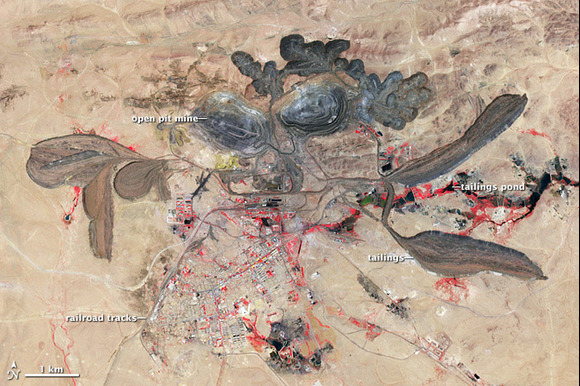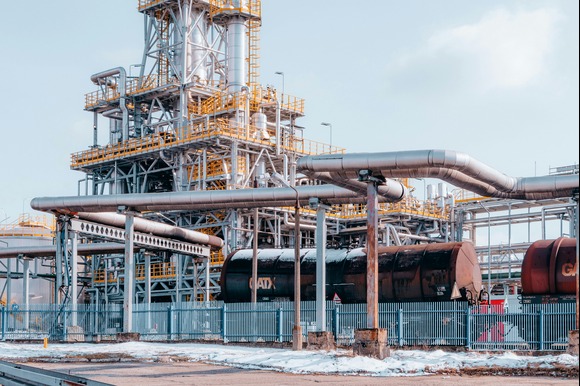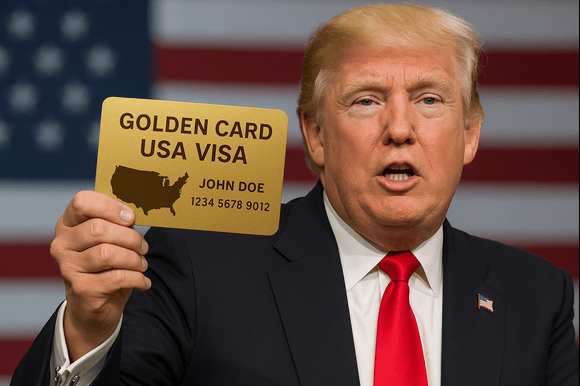
By NASA Earth Observatory
Drive three hours north of Perth, and you’ll find yourself in Eneabba — a desolate, sunbaked stretch of land with just the occasional hill interrupting the horizon.
This is Western Australia’s mining country. Beneath the stark, barren landscape lies a seemingly unremarkable pit filled with piles of dirt. But hidden within this massive stockpile — over a million tonnes — are critical minerals known as rare earths, essential for electric vehicles, wind turbines, and advanced military equipment.
Australia is placing a high-stakes bet on this deposit, offering a billion-dollar loan to a mining company in an effort to extract and process these metals — and challenge China’s dominance over the global supply chain.
The Strategic Gamble
The urgency of diversifying supply chains became painfully clear during the US-China trade war under President Donald Trump. When China restricted exports of rare earths — a vital tool in trade negotiations — it sent shockwaves through global manufacturing. Auto giant Ford even paused production of its popular Explorer SUV for a week at a Chicago plant, citing rare earth shortages.
CEO Jim Farley later admitted the pause stemmed from supply insecurity, calling it a “day-to-day” struggle.
Although China later agreed to resume rare earth shipments to the US, the disruption highlighted just how vulnerable global industries are to Beijing’s control — and the risk remains without a formal trade agreement.
“The West dropped the ball — that’s the reality,” says Professor Jacques Eksteen, chair for extractive metallurgy at Curtin University. “China saw the long-term advantage and committed to investing heavily in the industry.”
Why Rare Earths Matter
The term “rare earths” refers to 17 elements on the periodic table, prized for being lightweight, heat-resistant, and incredibly strong. They’re found in dozens of electric vehicle components — from side mirrors to braking systems — and are central to clean energy and defense technologies.
Despite the name, rare earths aren’t actually rare. “They’re not scarce like gold,” Professor Eksteen explains. “What makes them critical is that supply is heavily concentrated in just a few countries.”
In the 1990s, Europe, particularly France, played a leading role in rare earths production. Today, nearly all refining is done in China, which controls more than half of global rare earth mining and nearly 90% of processing.
The US relies on China for 80% of its rare earth imports, and the European Union depends on Beijing for approximately 98%.
“China has strategically and deliberately sought to dominate this market to support its downstream manufacturing and defense industries,” says Dan McGrath, head of rare earths at Iluka Resources, while giving a tour of the company’s Eneabba site.
Iluka Resources, traditionally a zircon miner — zircon is used in ceramics, paint, plastics and paper — has been accumulating byproducts such as dysprosium and terbium, some of the most valuable rare earths. The company now sits on a stockpile worth over $650 million (£440 million).
The Real Challenge: Refining
Mining rare earths is relatively straightforward. The real difficulty lies in processing them. “They’re chemically very similar, so separating them requires multiple complex stages,” says Professor Eksteen. “And the industry produces waste, often radioactive, which adds another layer of complexity.”
To address this, the Australian government is stepping in. It has granted Iluka a A$1.65 billion ($1 billion; £798 million) loan to build a new refinery, a move it views as vital to national interest.
Iluka predicts demand for rare earths could grow between 50% and 170% by 2030, and the company expects to supply a significant share of Western demand within the decade.
“Our customers are already asking when the refinery will be online,” says Mr McGrath. “They understand that an independent, sustainable supply chain outside China is crucial for their operations.”
But the project will take another two years to complete.
“Without the strategic partnership with the Australian government, this wouldn’t be economically feasible,” Mr McGrath acknowledges.
A Geopolitical and Environmental Imperative
China’s use of rare earth exports as leverage has prompted many of its trade partners to accelerate efforts to develop alternative sources. For automakers and defense contractors who plan years ahead, long-term supply stability is vital.
Rare earths are a linchpin of the global green energy transition, as well as military innovation — making their control a matter of national security for many countries.
“There is no true open market in rare earths,” says Madeleine King, Australia’s Resources Minister. “That’s a myth. One supplier dominates — they control pricing and supply.”
Australia is determined to challenge that control, even if it means direct government intervention.
“We can’t sit back and let China continue to monopolise this critical industry,” King says. “It’s our responsibility to develop a competing rare earths supply chain.”
However, Australia will have to confront a serious concern as it ramps up rare earth production: pollution.
China’s lax environmental standards during its decades of rare earth processing have led to catastrophic contamination, with radioactive waste and chemicals polluting waterways and affecting communities.
The concern isn’t the mining itself, but the dirty business of processing — a process involving leaching, thermal cracking, and refining, which generates radioactive byproducts.
“No metal industry is entirely clean,” Professor Eksteen says. “But Australia has legal frameworks and environmental protections in place to handle it responsibly.”
Breaking the Monopoly
The European Union has previously accused China of using its “quasi monopoly” on rare earths to pressure foreign industries. Even as China eases restrictions, the risk of future supply chain shocks looms large.
Despite the scale of the challenge, Australia’s approach — grounded in strong environmental standards, government support, and a massive natural stockpile — gives it a real shot at becoming a reliable global player in rare earths.
Though building an entire industry from the ground up will take time, Australia’s bet may help redraw the rare earths map — and offer the world a crucial supply chain outside of China’s grasp.




